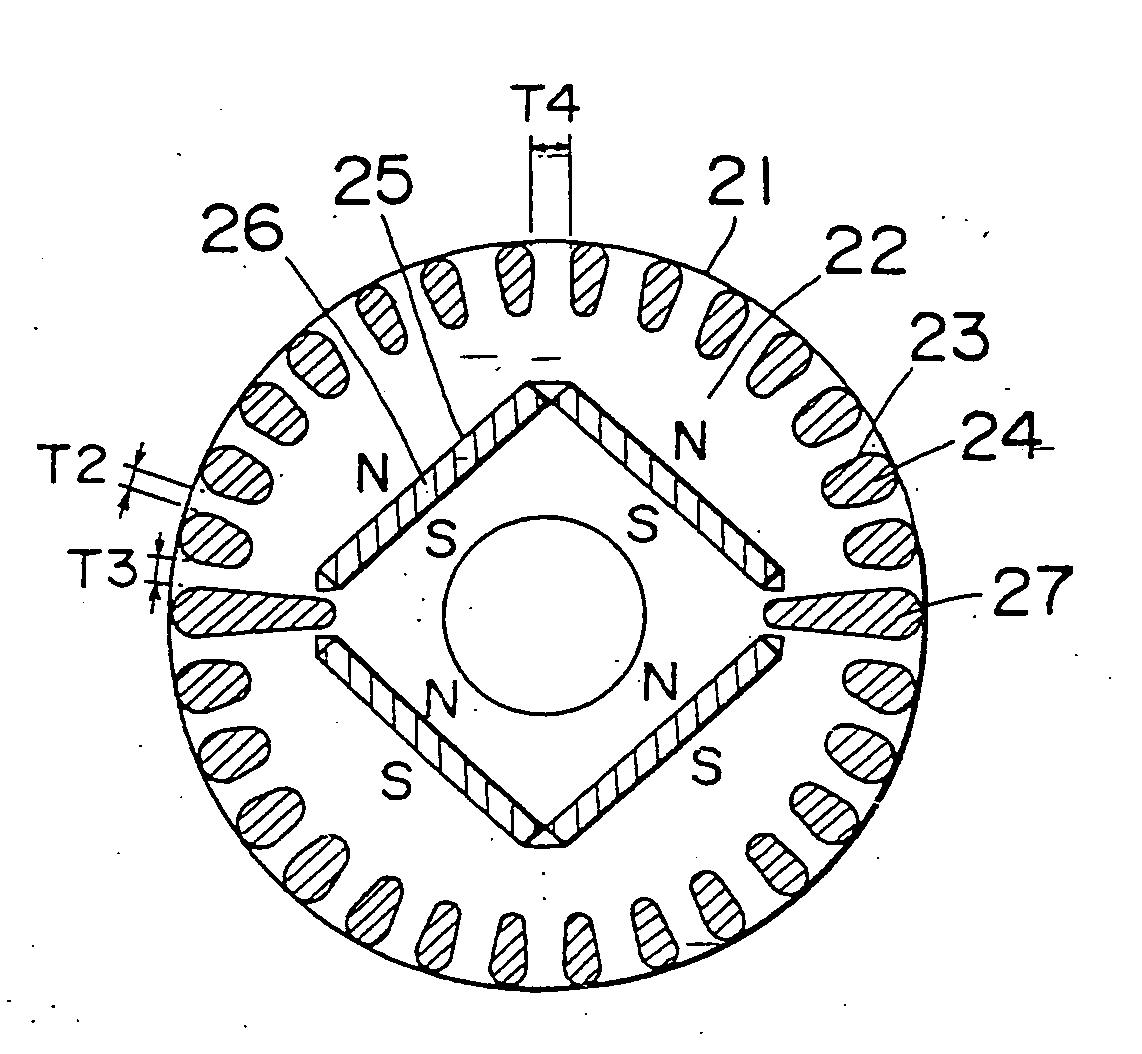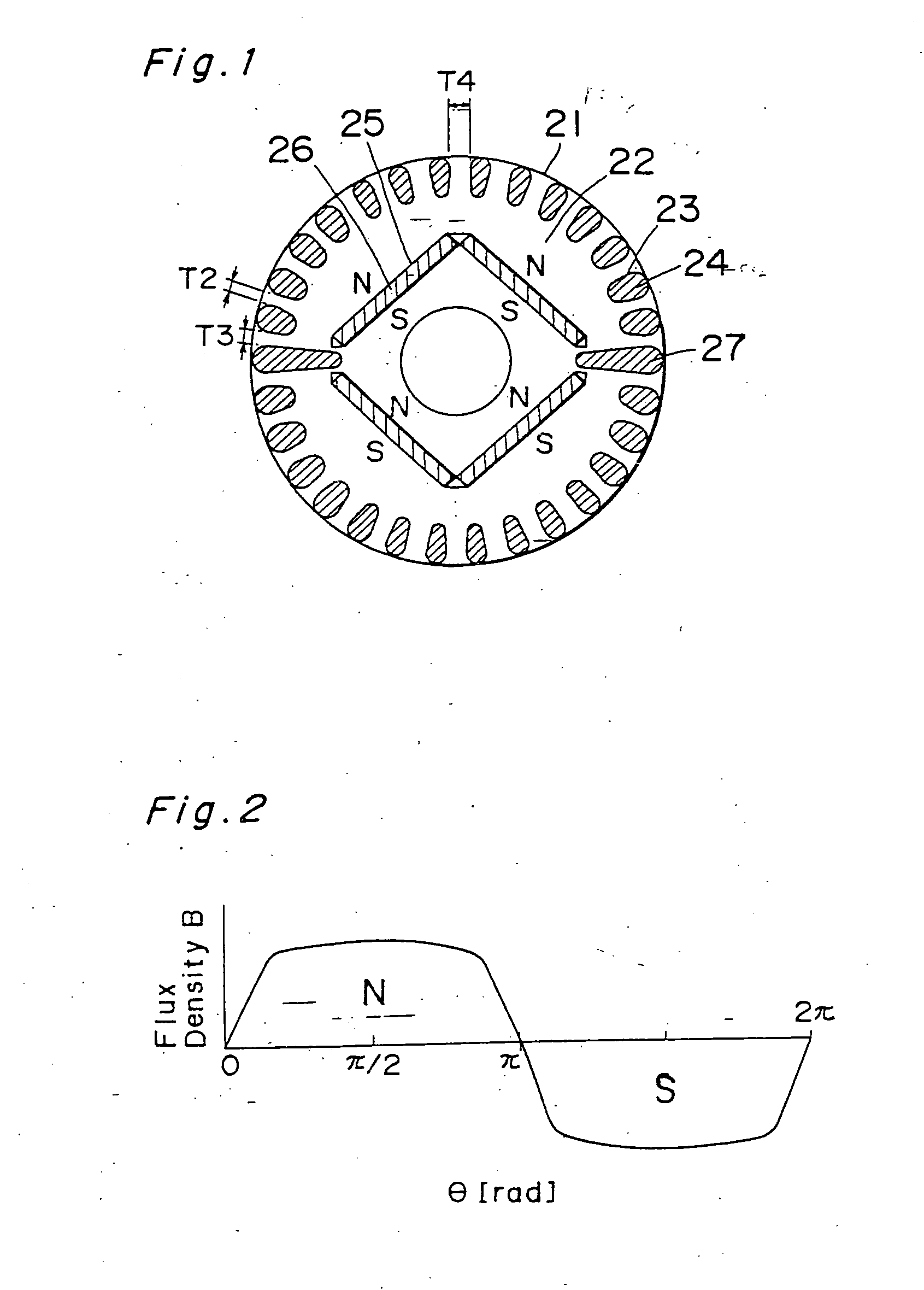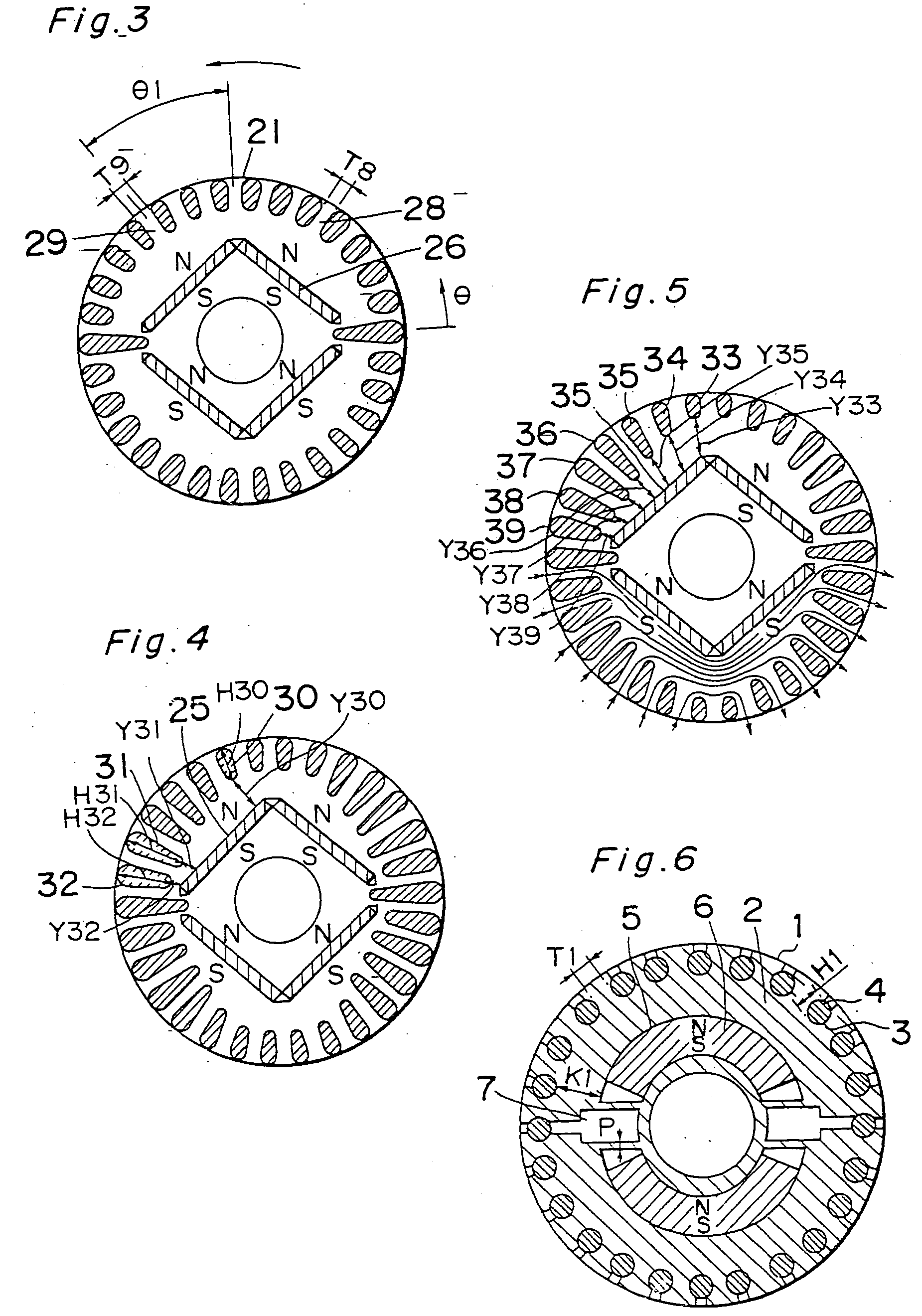Permanent magnet synchronous motor
a permanent magnet, synchronous motor technology, applied in the direction of synchronous motors, magnetic circuit rotating parts, magnetic circuit shapes/forms/construction, etc., can solve the problems of complex manufacturing steps, inability to achieve efficient rotatory drive, and difficulty in assembling permanent magnet motors, so as to achieve accurate results, reduce the number of assembling, and facilitate the effect of job
- Summary
- Abstract
- Description
- Claims
- Application Information
AI Technical Summary
Benefits of technology
Problems solved by technology
Method used
Image
Examples
first embodiment (
FIGS. 1 AND 2)
[0111]FIG. 1 illustrates a transverse sectional view of a rotor used in a self-starting synchronous motor of a type utilizing permanent magnets according to a first preferred embodiment of the present invention. In this figure, reference numeral 21 represents a rotor, and reference numeral 22 represents a rotor iron core. The rotor iron core 22 has a plurality of slots 23 defined in an outer peripheral portion thereof for accommodating a corresponding number of conductor bars 24, which are integrally molded together with shortcircuit rings (not shown) at axially spaced opposite ends of the rotor iron core 22 by the use of any known aluminum die casting to thereby provide a starter squirrel cage conductor. Permanent magnets 26 are embedded in respective magnet retaining holes defined in the rotor iron core 23 at a location radially inwardly of a round row of the conductor bars 24.
[0112] So far shown in FIG. 1, two plate-like permanent magnets 26 are butted end-to-end i...
second embodiment (fig.3)
SECOND EMBODIMENT (FIG. 3)
[0131]FIG. 3 illustrates a transverse sectional view of the rotor used in the self-starting permanent magnet synchronous motor according to a second preferred embodiment of the present invention. In FIG. 3, the rotor 21 is shown as rotating in a direction shown by the arrow. During a loaded operation, a composite magnetic flux of the magnetic flux emanating from the stator winding and the magnetic flux emanating from the permanent magnets 26 flows in a larger quantity in a portion 29 between the neighboring slots that are located on a leading side offset θ1 angularly in a direction conforming to the direction of rotation of the rotor, than that flowing in a portion 28 between the neighboring slots that are located on a trailing side from the center of the rotor magnetic poles with respect to the direction of rotation of the rotor. The size of that portion 29, that is, the spacing T8 between the neighboring slots on respective sides of that portion 29 is cho...
third embodiment (fig.4)
THIRD EMBODIMENT (FIG. 4)
[0132]FIG. 4 illustrates a transverse sectional view of the rotor used in the self-starting permanent magnet synchronous motor according to a third preferred embodiment of the present invention. In FIG. 4, one of the slots that is identified by 30 is the slot positioned adjacent the center of the rotor magnetic poles, and the slots 31 and 32 are positioned adjacent one of opposite ends of the rotor magnetic poles. These slots 30, 31 and 32 have different radial lengths H30, H31 and H32, respectively, and the distances Y31 and Y32 between the slot 31 and the magnet retaining hole 25 and between the slot 32 and the magnet retaining hole 25 are chosen to be so smaller than the distance Y30 between the slot 30 and the magnet retaining hole 25 that the magnetic fluxes emanating from the permanent magnets will hardly leak to the outer peripheral surface of the rotor adjacent he ends of the rotor magnetic poles and will, instead, leak to the outer peripheral surfac...
PUM
 Login to View More
Login to View More Abstract
Description
Claims
Application Information
 Login to View More
Login to View More - R&D
- Intellectual Property
- Life Sciences
- Materials
- Tech Scout
- Unparalleled Data Quality
- Higher Quality Content
- 60% Fewer Hallucinations
Browse by: Latest US Patents, China's latest patents, Technical Efficacy Thesaurus, Application Domain, Technology Topic, Popular Technical Reports.
© 2025 PatSnap. All rights reserved.Legal|Privacy policy|Modern Slavery Act Transparency Statement|Sitemap|About US| Contact US: help@patsnap.com



